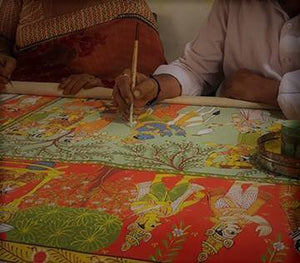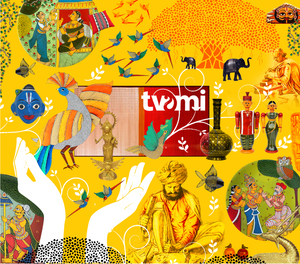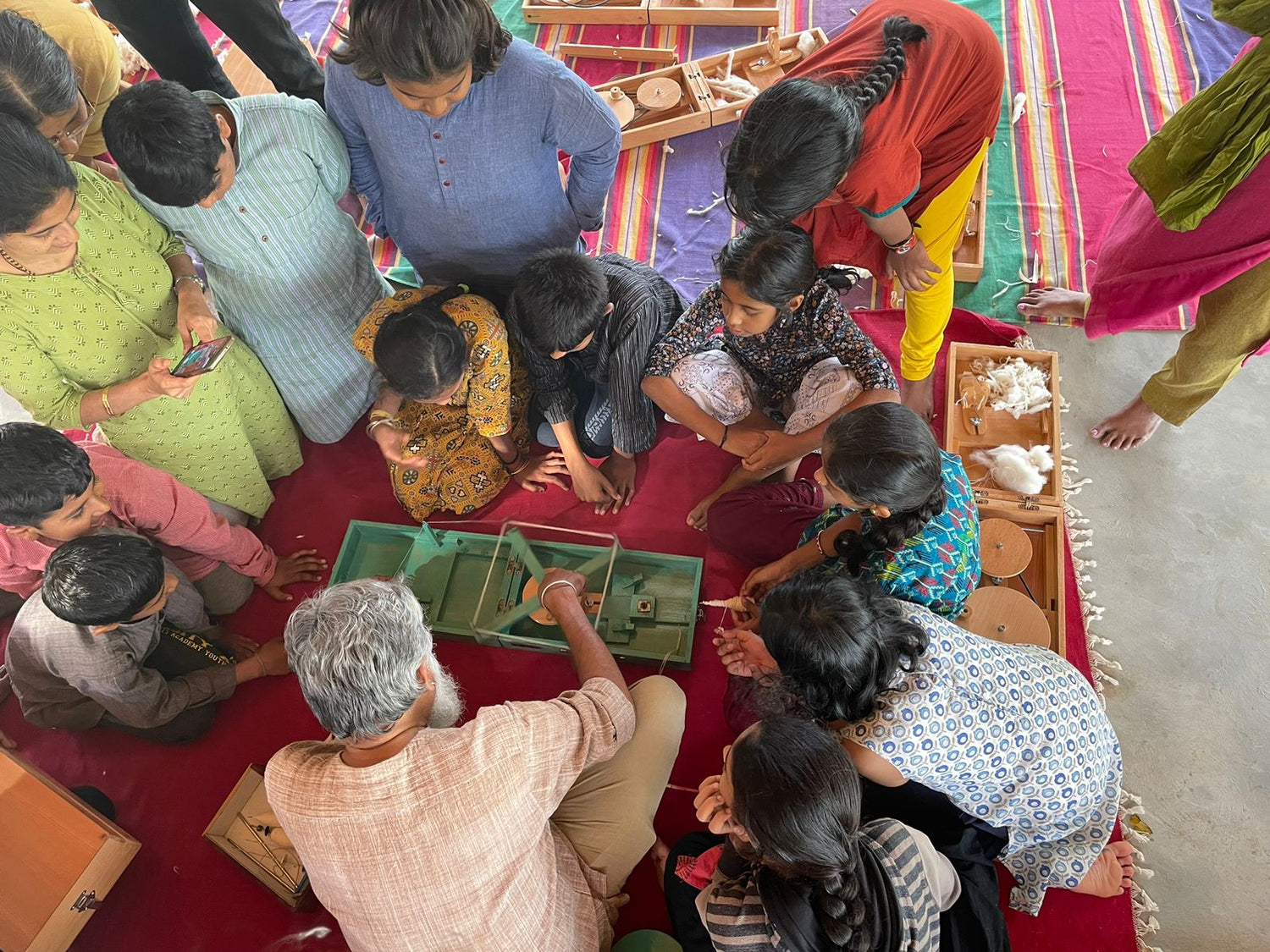Ratneshwar Jha is a 28-year old Mithila artist living in the Madhubani district near Janak in Bihar. The Mithila craft has very ancient roots and is said to be nearly 2000 years old. Some say that its origins are in the Ramayan period when King Janak commissioned an artist to paint his daughter Sita’s wedding with Ram.
Ratneshwar and his father have spent their whole lives learning and practising Madhubani art. His father has been an artist for nearly 65 years now. He talks fondly about the history of the craft in his family and how it has evolved, “My dadi use to do paint on walls. She used cow dung as a base and then made colours from flowers and used dried leaves to carve designs. Today we do on paper so more people can appreciate our folk art.”
During special occasions, they indulged in the art as a form of decoration – to add vivacity to their environment. It was a sustainable, aesthetic, and affordable alternative to re-painting homes. His father practises on wood, metal, marble, and cement by carving on them and then painting them.
Since more people are aware of Madhubani art, it has grown in popularity, especially in the past few years. Ratneshwar is part of a cluster in his area and they work together when it comes to fulfilling large orders. With a master’s in arts, he is well-qualified and paints for about 4 to 5 hours in a day while using the rest of his time to teach others the techniques and nuances of Madhubani art.
“I know I am an artist because when I see the world around me, I want to ink it in Madhubani style – with these brilliant colours and lines, giving it my personal touch.”, Jha confesses when asked about his inspiration to create.
Radha and Krishna stories are prominent themes in Madhubani art, depicted through Ras leela, Makhan chor, Cheerharan. Patrons enjoy the paintings of these two beloved characters and since they are able to understand the context more, they relate to it better. Even scenes from Mahabharata are in demand. Other recurring themes are the peacock and fish. The fish is perceived as a lucky charm. Peacocks can be illustrated in countless ways. Ratneshwar’s personal favourite is the Lord Krishna makhan chor (stealing butter) painting.
Unfortunately, sales are seasonal, and they struggle in the months between April and September. This means they need to work extra hard the remaining months to compensate for income.
Having learnt from his father, he remains in awe of his skills and aspires to reach his level of expertise and creative genius. His younger brother is studying and learning the craft as well. With most of the children and teenagers keen on pursuing education and stable jobs, Ratneshwar is unsure of the future of Madhubani art in his family.
Ratneshwar also worries that the craft world is becoming too mechanical and he wants consumers to take more interest and be aware of differences between manufactured products and real art. This is the only way artisans can thrive.
“We are exploring how to use our traditional art form with new products to give this generation something they’ll like.”, he says promisingly.



